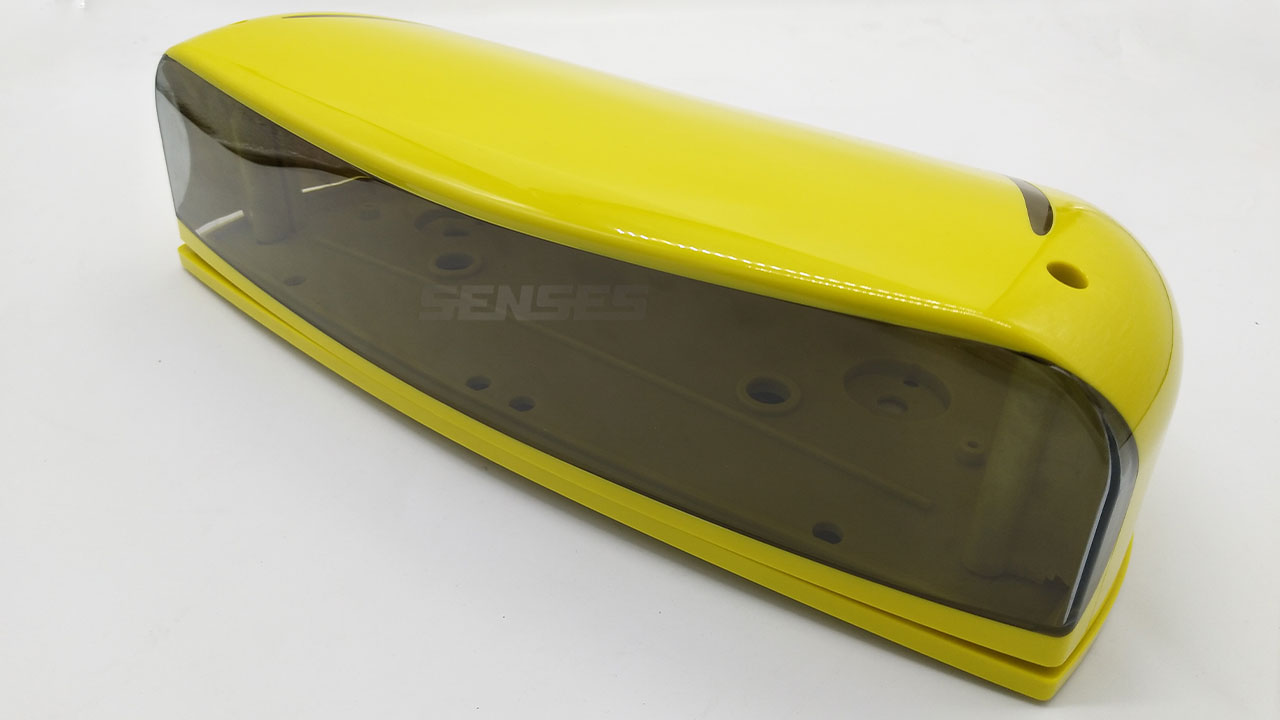Overmolding process and insert molding process are two distinct yet closely related injection molding techniques, both involving the incorporation of multiple materials into a single product. At a first glance, these two processes can seem quite similar as they both involve molding one material over another.
What is Overmolding Process?
Overmolding is a sophisticated injection molding technique involving the sequential molding of two or more distinct materials onto one another. Sometimes termed as two-shot molding due to its two-phase process, this procedure enables the creation of composite parts in a single operation, enhancing the component’s functionality and aesthetic appeal.
How Overmolding Works?

Overmolding employs a specialized plastic injection molding tool, which features a cavity for the substrate portion and a separate cavity for the overmolded section. The initial conventional injection cycle shapes the substrate using a standard thermoforming resin. This resin fills the gate, runner, and cavity system of only one portion of the mold, while the overmold segment is blocked. Once the base cools down and semi-hardens, the mold is rotated to a new position and connected to a separate nozzle, gate, and runner system. The remaining void in the mold tool cavity is filled with a TPE or TPU elastomer, forming the overmold that bonds to the substrate.
The benefits of using the overmolding process
Manufacturers who value design versatility, improved grip, and stylish aesthetics appreciate the advantages that the overmolding process offers their products. Despite its relatively low cost, overmolding has continuously evolved and improved over the years.
Here are the benefits of utilizing overmolding:
- Improved Product Functionality: Overmolding can enhance a product’s shock resistance, increase stress release for cables, add anti-slip features to parts, and increase the durability and comfort of the parts.
- Enhanced Aesthetics: Overmolding can improve the visual appeal of a product as it allows for multiple colors and textures on a single product.
- Reduced Production Costs: Overmolding can reduce the number of parts required, thereby lowering assembly and production costs. It also eliminates the need for bonding, welding, or other assembly methods.
- Increased Production Efficiency: By reducing the number of parts and assembly steps, overmolding can speed up the production process.
- Stronger Structure: Parts created with overmolding are typically stronger than parts made from a single material, as they are made as a single piece rather than assembled from separate parts.
Overmolding Materials

When it comes to material selection, both the substrate and overmold should be taken into account. Material selection is a crucial consideration. Overmolding accommodates a wide array of materials. The substrate typically comprises a harder plastic or a blend of plastics to achieve the targeted properties.
Here are factors to consider during this process:
- Bonding: Some materials may bond together during overmolding, while others may not. A perfect bond is ideal, but not always required. If the materials can’t or don’t need to bond, mechanical features such as undercuts or indents can be incorporated to ensure a durable connection.
- Hardness: You also need to consider if your chosen material is prone to bending. This consideration is crucial as any bending might affect the grip of your final product. If the grip is compromised, the two materials may not adhere properly.
- Temperature: As overmolding involves molding plastic over plastic, the substrate must withstand the heat and pressure of the injection molding process without deformation.
Materials Commonly Used in Overmolding
Overmolding can be performed with many different types of materials. Typically, the substrate is a hard plastic, and the overmold might be a flexible plastic or rubber. Here are some materials commonly used in overmolding:
- Acrylonitrile Butadiene Styrene (ABS): ABS is a common substrate choice because it is easy to process, has excellent mechanical properties.
- Thermoplastic Elastomers (TPEs): TPEs are highly suitable for overmolding because they offer excellent flexibility and elasticity. They can serve as a soft outer layer, ideal for applications needing slip-resistance or comfortable grip.
- Polypropylene (PP): PP is another plastic often used in overmolding. It is a cost-effective, lightweight, yet strong material. With its chemical resistance and heat stability, PP is an ideal choice for many overmolding projects.
- Polycarbonate (PC): PC is a common hard plastic substrate. It possesses outstanding impact strength, transparency, and heat resistance.
- Polyurethane (PU): PU is a wear-resistant, elastic material with strong adhesion, particularly suitable for overmolding.
- Nylon: Nylon is a preferred choice in many overmolding applications because it offers excellent mechanical properties and chemical resistance.
Applications of Overmolding
Overmolding has broad applications across various industries and products. Here are some examples:
Medical Devices
Overmolding is often used in surgical tools, handheld devices, disposable devices, and medical-grade connectors to enhance comfort and slip-resistance.
Electronic Devices
Overmolding is employed in manufacturing cables, connectors, shock and slip-resistant cases, etc.
Automotive Components
Car door handles, dashboards, control switches, and more often employ overmolding for enhanced durability and aesthetics.
Consumer Goods
Items like razors, toothbrushes, kitchen utensils often utilize overmolding to increase grip comfort and improve product appearance.
Industrial Tools
Handheld tools such as drills, saws, wrenches use overmolding to provide better grip and slip-resistance.
Senses Overmolding Service
At Senses, we offer top-tier overmolding services to elevate your products to the next level. Our expert team, with its extensive experience, is adept at handling complex overmolding projects. We excel at seamlessly integrating diverse materials to create durable, functional, and aesthetically pleasing products. We also provide custom solutions tailored to various unique requirements, whether it’s design optimization, material selection, or scaling up production, we can effortlessly manage it.
At Senses, our goal is to meet client needs and enhance the value of their products through our premium overmolding services. Reach out to us for a complimentary quotation.





